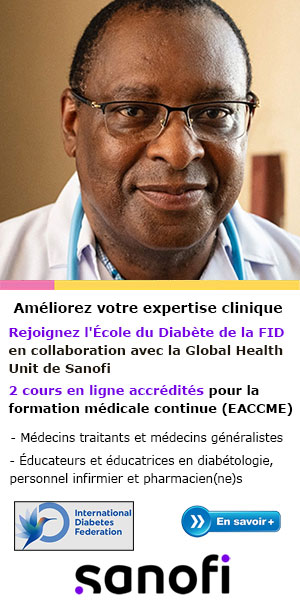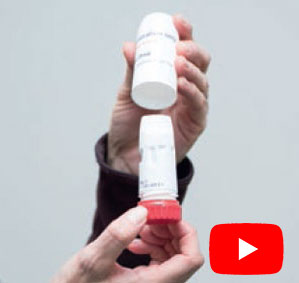← retour Santé tropicale
Accès aux sites pays ![]()
![]() BENIN
BENIN![]() BURKINA FASO
BURKINA FASO![]() CAMEROUN
CAMEROUN![]() CENTRAFRIQUE
CENTRAFRIQUE![]() CONGO
CONGO![]() COTE D'IVOIRE
COTE D'IVOIRE![]() GABON
GABON
![]() GUINEE
GUINEE![]() MADAGASCAR
MADAGASCAR![]() MALI
MALI![]() R.D. CONGO
R.D. CONGO![]() SENEGAL
SENEGAL![]() TOGO
TOGO
← retour Santé tropicale
Accès aux sites pays ![]()
![]() BENIN
BENIN![]() BURKINA FASO
BURKINA FASO![]() CAMEROUN
CAMEROUN![]() CENTRAFRIQUE
CENTRAFRIQUE![]() CONGO
CONGO![]() COTE D'IVOIRE
COTE D'IVOIRE![]() GABON
GABON
![]() GUINEE
GUINEE![]() MADAGASCAR
MADAGASCAR![]() MALI
MALI![]() R.D. CONGO
R.D. CONGO![]() SENEGAL
SENEGAL![]() TOGO
TOGO
Publié dans Médecine d'Afrique Noire 7104 - Avril 2024 - pages 269-277
 Apport de l’échographie doppler des bourses dans le suivi des varicocèles traitées chirurgicalement
Apport de l’échographie doppler des bourses dans le suivi des varicocèles traitées chirurgicalementAuteurs : G. Botcho, DB. Ky, A. Ouattara, AK. Paré, A. Ouedraogo, O. Diallo, R. Sawadogo, S. Ouedraogo, B. Kirakoya, FA Kaboré - Burkina Faso
Introduction : La varicocèle est la dilatation variqueuse des veines du cordon spermatique, se présentant sous forme d’une tuméfaction molle, parfois douloureuse. Il s’agit d’une entité nosologique fréquente. L’objectif de notre étude était de contribuer à l’amélioration de la prise en charge chirurgicale de la varicocèle.
Méthodologie : Il s’est agi d’une étude descriptive, analytique et rétrospective sur un échantillon de 50 patients colligés dans des services d’urologie de la ville de Ouagadougou. La collecte s’est déroulée du 31 mars au 31 août 2017 au service d’imagerie médicale du Centre Hospitalier Universitaire (CHU) Yalgado Ouédraogo.
Résultats : L’âge moyen des patients était de 37,78 ans. Les patients étaient mariés dans 88% et leur indice de masse corporelle (IMC) était normal dans 66% (n = 33) des cas. La varicocèle était découverte dans 76% (n = 38) lors de l’investigation d’une infertilité du couple. La varicocèle était bilatérale dans 96% des cas, gauche dans 4%. Selon la classification de Dubin et Amelar, les grades II et III prédominaient à 48% chacun. Le spermogramme trouvait des anomalies chez 48 patients soit 96% dominée par l’oligo-asthénozoopermie à 62%. L’échographie doppler des bourses retrouvait : 16% d’hypotrophie testiculaire à droite et 18% à gauche ; une dilatation veineuse avec un reflux veineux à l’épreuve de Valsalva chez 48 patients soit 96%. La localisation de la varicocèle était différente de celle retrouvée à l’examen clinique : droite (2,08%) ; gauche (14,58%) et bilatérale (83,34%). Au contrôle, le spermogramme était normal dans 24% des cas ; l’échographie des bourses retrouvait une hypotrophie testiculaire bilatérale dans 30% des cas. Le volume testiculaire moyen était de 13,27 cm3 à droite et 13,69 cm3 à gauche. Un épanchement intravaginal a été retrouvé dans 46% des cas à gauche et 40% à droite. La taille moyenne des veines était de 2,51 mm, un reflux permanent et/ou l’épreuve de Valsalva était présent chez 24 patients (48%) dont 16 récidives.
Conclusion : L’échographie Doppler contribue aussi bien au diagnostic, à l’indication chirurgicale qu’au suivi post-opératoire en statuant sur le succès morphologique (disparition de la dilatation veineuse) et en dépistant les complications.
Introduction: Varicocele is varicose dilatation of the veins of the spermatic cord, presenting as a soft, sometimes painful swelling. It is a frequent nosological entity. The aim of our study was to contribute to the improvement of the surgical management of varicocele.
Methodology: it is a descriptive, analytic, and retrospective study on a sample of 50 patients collected in urology departments of the city of Ouagadougou. The collection took place from March 31st to August 31st, 2017, at the Medical Imaging Department of the Teaching Hospital of Yalgado Ouedraogo.
Results: The average age of the patients was 37.78 years old. Informal sector actors (40%) and civil servants (40%) were the most represented. 88% of the patients were married. They had a secondary and higher level of education in respectively 36% (n = 18) and 42% (n = 21) and their BMI was normal in 66% (n = 33) of the cases. Varicocele was found in 76% (n = 38) when investigating infertility in the couple. Varicocele was bilateral in 96% of cases, left in 4%. According to the Dubin and Amelar classification, grades II and III predominated at 48% each. The spermogram found abnormalities in 48 patients or 96% dominated by oligo-asthenozoospermia to 62%. The Doppler ultrasound of the stock exchanges found: 16% of testicular hypotrophy on the right and 18% on the left; Venous dilatation with venous reflux in the Valsalva test in 48 patients, ie 96%. Reflux was permanent in 32 patients, ie 64% of the cases. The location of the varicocele was different from that found on clinical examination: right (2.08%); left (14.58%) and bilateral (83.34%). An intravaginal effusion of low bilateral abundance was found in 6 patients, ie 12%. At control, the spermogram was normal in 24% of cases; ultrasonography found bilateral testicular hypotrophy in 30% of cases. The mean testicular volume was 13.27 cm3 on the right and 13.69 cm3 on the left. Intravaginal effusion was found in 46% of the cases on the left and 40% on the right. The average vein size was 2.51 mm. Continuous reflux and / or the Valsalva test was present in 24 patients (48%), including 16 recurrences.
Conclusion: Doppler ultrasonography contributes to diagnosis, surgical indication and post-operative follow-up by determining morphological success (disappearance of venous dilatation) and detecting complications.
Cet article est actuellement coté ![]() (1,0 étoiles) par les abonnés de Médecine d'Afrique Noire.
(1,0 étoiles) par les abonnés de Médecine d'Afrique Noire.
Il a été consulté 2614 fois, téléchargé 11 fois et évalué 1 fois.
Aucun commentaire n'a encore été ajouté à propos de cet article

Restez informés : recevez, chaque mercredi, la revue de presse de Santé tropicale. Inscriptions

Montrez cette courte vidéo à vos patients afin que l'efficacité soit maximale.

Ce contenu gratuit vous est destiné :


![]() Adresse
Adresse
![]() Téléphone
Téléphone
![]() Contactez-nous
Contactez-nous
Actualités
Articles médicaux